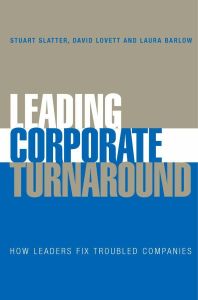Join getAbstract to access the summary!

Join getAbstract to access the summary!
Stuart Slatter, David Lovett and Laura Barlow
Leading Corporate Turnaround
How Leaders Fix Troubled Companies
Jossey-Bass, 2006
What's inside?
Rescuing a failing company requires making tough, unpopular decisions. Bring in the pros to do it.
Recommendation
Managing a successful turnaround is tough, and it requires tough actions by "company doctors" who gallop in to rescue companies from the brink of financial death. Although most management projects require subtlety and tact, turnarounds need quick, blunt actions, such as firing top managers or selling unprofitable divisions. Stuart Slatter, David Lovett and Laura Barlow present a blueprint for people engaged in turnarounds. Using interviews with 80 turnaround specialists in the United Kingdom, the authors make their point – often more than once. The most interesting and useful parts of this volume are the short, boxed case studies in each chapter. getAbstract recommends this informative book on a little-known business topic to creditors, attorneys, accountants, venture capitalists and curious managers, as well as to specialized consultants who may become involved in turnarounds.
Summary
About the Authors
Stuart Slatter is a founding partner of a firm that consults on corporate turnarounds. He is a visiting fellow in strategic and international management at the London Business School and the author of Gambling on Growth and Corporate Turnaround. David Lovett is a fellow of the Institute of Chartered Accountants of England and Wales, as well as a fellow and founding member of the Society of Turnaround Professionals. Laura Barlow is a director of a turnaround and restructuring practice, and has worked with numerous companies. She is a chartered accountant.
















Comment on this summary